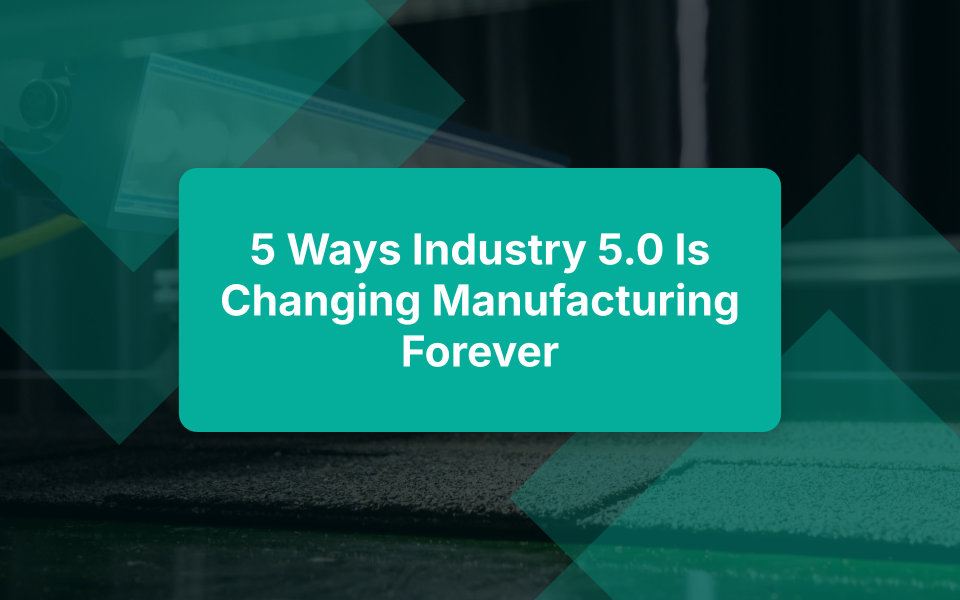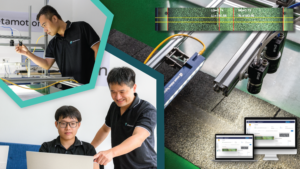The industrial landscape is on the cusp of a revolution. As we transition from Industry 4.0 to Industry 5.0, a new phase emerges that blends human creativity and advanced technology. This evolution prioritizes collaboration between humans and machines, fostering innovation in manufacturing like never before. In this article, we’ll explore five transformative ways Industry 5.0 is reshaping the manufacturing sector and why it’s crucial for businesses to adapt.
Understanding Industry 5.0
The leap from Industry 4.0 to Industry 5.0 is more than just a tech upgrade—it’s a shift in manufacturing perspective. Industry 5.0 emphasizes the synergy between human creativity and automated processes. It’s not just machines churning out products; it’s about fostering a collaborative environment where innovation thrives.
Distinction Between Industry 4.0 and Industry 5.0
While Industry 4.0 was all about automation, efficiency, and data through interconnected devices, Industry 5.0 shifts gears. It acknowledges the irreplaceable role of humans in manufacturing. Here, machines assist rather than replace, combining automation with human insight. This blends efficiency with creativity, enriching the workplace.
Emphasis on Human-Centric Innovation
Human-centric innovation is at the heart of Industry 5.0. It leverages unique human skills—like problem-solving, empathy, and creative thinking—integrating them with manufacturing processes. This collaborative approach ensures that workers and machines complement one another, launching a new era of more adaptable and satisfying manufacturing.
1. Enhanced Human-Machine Collaboration
The backbone of Industry 5.0 is the synergy between humans and machines. Collaborative robots, or cobots, are designed to work alongside humans, enhancing efficiency while leaving creativity and complex problem-solving to people.
Role of Collaborative Robots (Cobots) in Manufacturing
Cobots, equipped with advanced sensors and artificial intelligence, assist in various tasks, from assembly to quality control, ensuring safety and productivity. Unlike traditional robots, cobots are user-friendly, adapting to various environments without extensive reprogramming.
Examples of Machines Assisting Human Workers
Imagine an assembly line where a cobot helps a worker by lifting heavy components, reducing physical strain and speeding up tasks. Alternatively, a cobot might analyze data to detect production inconsistencies, alerting managers before issues escalate. By taking on mundane tasks, cobots free workers for innovation.
Benefits of Human Creativity with Machine Efficiency
Combining human creativity with machine efficiency transforms manufacturing. It inspires new ideas, leading to innovative products and improved processes. Harnessing these strengths enhances competitiveness and market responsiveness while maintaining quality. This partnership not only boosts productivity but also enriches the workplace, making it more engaging.
2. Customization at Scale
In Industry 5.0, customization at scale becomes key, moving beyond one-size-fits-all solutions to efficiently meet individual customer needs.
Adapting Production Processes
- Quick adjustments cater to customer preferences without major overhauls.
- Smart technologies enable systems to self-reconfigure.
- Real-time data allows fluid, responsive production.
- Enhanced product quality resonates with customers.
Smart Technologies at Play
- Additive manufacturing and AI-driven tools push personalization.
- Custom colors and features become limitless.
- Advanced analytics predict trends for smoother personalization.
Customer Experience and Satisfaction
- Customization exceeds customer expectations.
- It fosters deeper connections and loyalty.
- Tailored products enhance satisfaction in a competitive market.
Key Takeaway
Customization at scale isn’t just a trend—it’s a fundamental shift empowering manufacturers and consumers, strengthening relationships and market success.
3. Smart Factories and Connectivity
Smart factories are revolutionizing manufacturing by combining technology with flexible production methods, creating an interconnected environment that boosts efficiency.
Definition and Characteristics of Smart Factories
Smart factories are digitalized sites where machines, systems, and humans communicate seamlessly. Automated processes, real-time tracking, and adaptive techniques define them, enabling smarter decisions and rapid production adjustments.
Integration of IoT Devices for Real-Time Monitoring
The integration of IoT devices is crucial in monitoring machinery, inventory, and workflows. Real-time data insights help predict maintenance needs, reducing downtime and ensuring smooth operations.
Improving Supply Chain Efficiency
Effective supply chain communication is essential, and smart factories enhance this by sharing data across stakeholders. This transparency allows quick market response, optimized inventory, and efficient resource use, leading to a lean supply chain adaptable to changes.
In summary, smart factories represent the next manufacturing level, using connectivity and data to enhance productivity and flexibility.
4. Sustainability and Resource Management
Sustainability in Industry 5.0 is a core principle driving innovation, with companies focused on efficiency and minimizing their environmental footprint.
Innovations to Reduce Waste and Energy
Manufacturers adopt technologies to streamline processes and cut waste. AI and machine learning analyze data to pinpoint waste, tailoring production schedules to reduce excess. Smart energy systems optimize usage, operating machines under ideal conditions while conserving resources.
Real-time Analytics for Optimization
Real-time analytics transform resource management. IoT sensors track usage patterns, allowing immediate adjustments to prevent overuse. By monitoring consumption, manufacturers support sustainability goals and enhance resource utilization.
Overall, sustainability in Industry 5.0 represents a shift in how companies view their environmental impact, unlocking potential savings and improved brand loyalty from conscious consumers.
5. The Shift Towards Resilience and Agility
In a fast-paced market, adaptability is crucial. Industry 5.0 equips manufacturers, enabling quick pivoting and response to sudden challenges.
Importance of Adaptability
Global unpredictability demands flexibility. Industry 5.0 emphasizes resilience, enabling anticipation of changes. This is vital for surviving supply chain disruptions or shifts in consumer preferences.
Preparing for Sudden Changes
Smart technologies and data analytics provide real-time operational insights, enabling rapid decisions and process adjustments. Human-machine collaboration enhances agility, implementing swift changes based on insights.
Success Stories in Agile Manufacturing
Flexible production lines allow quick adaptation to demand, using technology and analytics for streamlined operations. Success stories show Industry 5.0 fosters flexibility driven by human ingenuity.
Key Takeaway
Resilience and agility are future manufacturing cornerstones. Embracing collaboration and smart technologies positions businesses as pioneers, thriving amidst uncertainty.
Looking Ahead: The Future of Manufacturing
As Industry 5.0 advances, the focus will increasingly be on integrating human creativity with technology innovations. Here are some key predictions:
Continuous Technological Integration
Expect systems that evolve seamlessly. Manufacturing will rely more on adaptive technologies that refine processes based on human feedback, leading to greater efficiencies.
Job Role Transformation
With smarter technologies, job roles shift. There’s a growing need for highly skilled workers to manage advanced systems. While traditional roles may reduce, new positions in design and strategy will flourish.
Upskilling and Lifelong Learning
Training is paramount. To fully leverage Industry 5.0, ongoing education is crucial—learning new technologies and fostering collaboration. Organizations prioritizing upskilling enhance individual capabilities and drive innovation.
In conclusion, the future of manufacturing lies in a dynamic partnership between technology and human talent. Embracing this shift prepares companies for change and creates a resilient, adaptable environment.
Conclusion
Industry 5.0 is a fundamental shift, blending human insight and machine capability. This new era fosters creativity and collaboration, enabling businesses to produce tailored, sustainable products. Embracing Industry 5.0 means preparing for dynamic market conditions and capitalizing on the agility it offers. As industries adapt and innovate, the future of manufacturing promises to be brighter and more sustainable.





